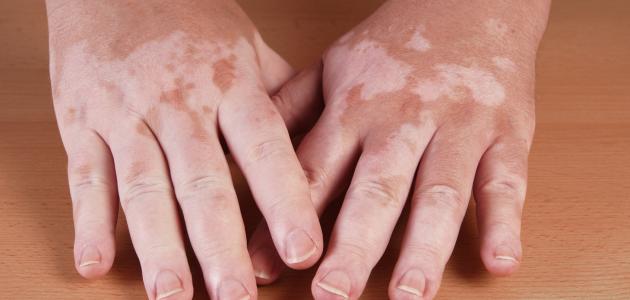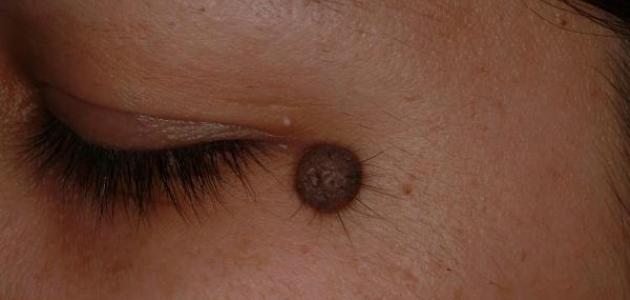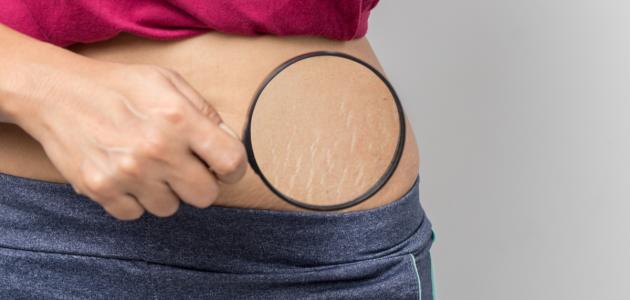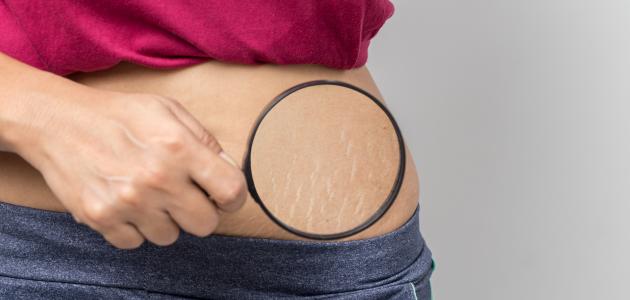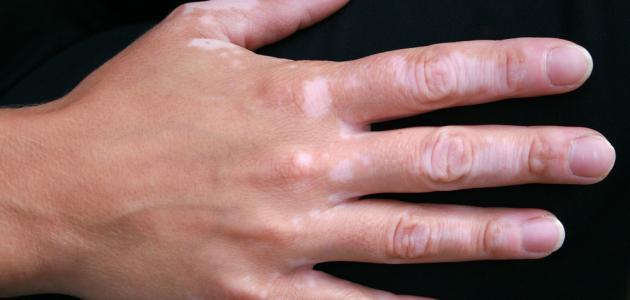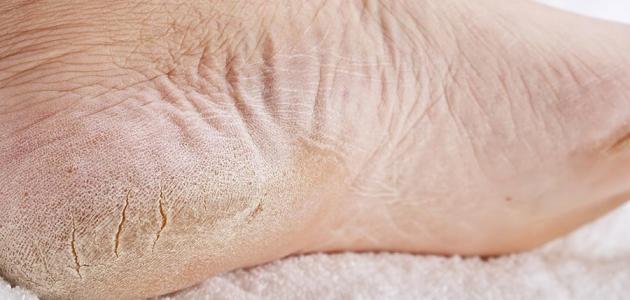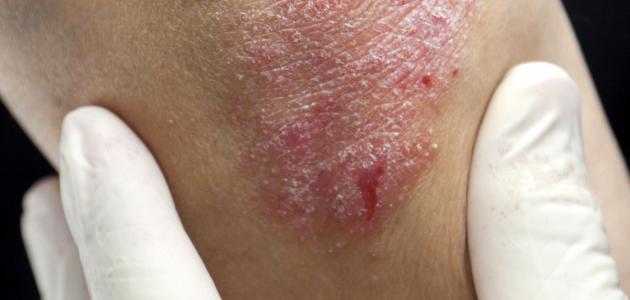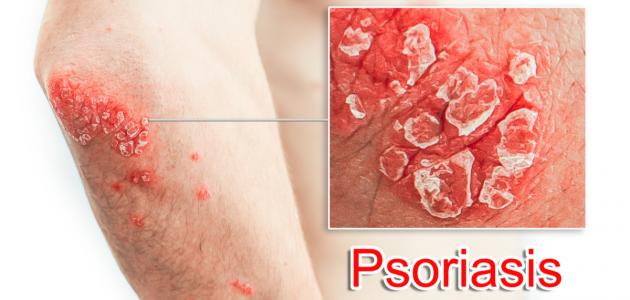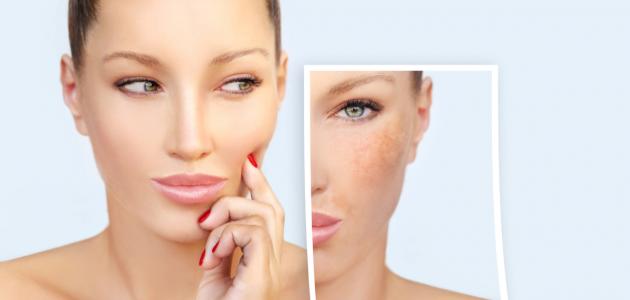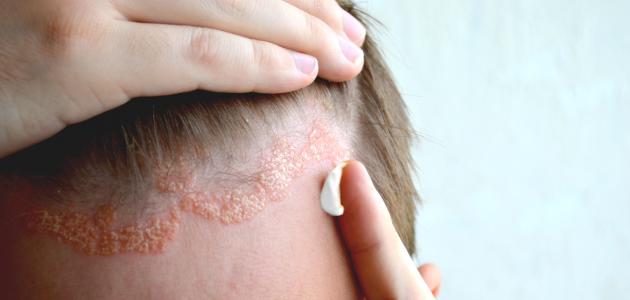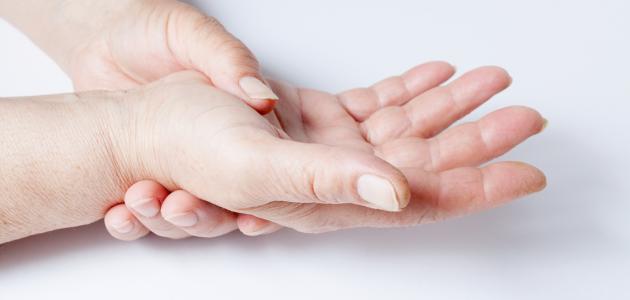Contents
Vitiligo
The vitiligo disease skin condition is not contagious, is the appearance of white patches on the surface of the skin, [1] [2] is Vitiligo a autoimmune disease caused by attacking the immune system to certain cells of the body known as cell chromosome or melanomas , and it is noteworthy that these cells are responsible for giving the skin and eyes their original color through the production of melanin , and as a result, melanocytes are affected by this condition, the amount of melanin decreases, and thus the skin loses its original color and the appearance of these spots. [3]
To learn more about Vitiligo, you can read the following article: ( What is Vitiligo ) .
Signs and symptoms of vitiligo
Symptoms of vitiligo vary from person to person, as some may not show any signs or symptoms that indicate infection despite their disease, and it may also vary between patients the affected area of the body, the areas affected by vitiligo, and the stability or spread of its symptoms, and in this context it is referred to. It is difficult to predict the probability of spreading these spots, the extent of their spread, and the duration of the consequent time. The spots of the disease may spread within weeks, and may remain constant for several months or years, [2] [4]The effect of the disease is not limited to a specific area of the body, as it may affect different areas, and it is common for vitiligo to affect the face, neck, hands, wrists, and scalp, as it may affect the nipples, genitals, and areas that include skin folds. Such as the armpit and groin area, and it should be noted that Vitiligo may affect the skin areas that have previously been exposed to injuries and skin problems . Including those that have been exposed to wounds and burns, and in this context referring to the possibility of hair being affected by the disease, it is possible that the hair in areas of the scalp affected by vitiligo will appear gray or white, [5] and also the disease of vitiligo may affect the color of the eyebrows and eyelashes, and it is worth noting that The areas affected by vitiligo will be more sensitive to light and sunlight than other healthy areas of the body. [3][4]
Most people with vitiligo lose their own skin color, as the skin may become light-colored or turn white, and it is worth noting that the spots formed in cases of vitiligo are permanent in most cases, and often the center of the spot is white, and the surrounding skin is Pale, and the spots may appear slightly pink in the event that the skin areas that have blood vessels under the skin are affected directly, and as for the edges of the spots, they may have a smooth texture and an irregular shape, and sometimes the spots may be red or brown in color, and they may be inflamed, [6] [7] It should be noted that light-colored spots are more noticeable in people with darker skin tones, [4]It is noteworthy that vitiligo patches may cause itching sometimes, is the feeling of skin comfort or dehydration as a result of injury vitiligo uncommon, [7] and about the psychological symptoms that may ensue Vitiligo these may suffer patients by low self - esteem and depression , regardless of the severity of symptoms Or the type of vitiligo, and in general vitiligo can be divided into two main groups: They are Segmental and Non Segmental Vitiligo, and each group of them has special symptoms, which we explain below. [6] [8]
Non-segmental vitiligo
Non-segmental vitiligo, also known as Vulgaris Vitiligo, is more common than the segmental type, and patches of this type often appear equally and somewhat symmetrically on both sides of the body, and the symptoms of segmental vitiligo appear on areas of the body exposed to the most sunlight. ; Such as the face, the neck, and the hands, and the development of these spots is slower if they affect only one area of the body, [8] [9] and non-segmental vitiligo includes all types of vitiligo that cannot be included under the name segmental vitiligo, which will be explained in later paragraphs of this The article, and examples of non-segmental vitiligo include: [8]
- Focal Vitiligo: , and is characterized by its development in the form of one or more spots in a limited area that does not follow the segmental distribution, [8] and the spots in this case are flat, inconspicuous and tangible, and usually less than 10 mm in diameter, and the spots are the same The level of the skin, that is, it is not lower or higher than its level, and it has a different color from the surrounding healthy skin. [10]
- Generalized Vitiligo: It is characterized by being more widespread compared to local or focal vitiligo, and it includes several subtypes. These include Acrofacial Vitiligo, which appears in the form of skin pigmentation , common Vitiligo , which is characterized by the appearance of scattered spots spread over large areas of the body, and Universal Vitiligo, which is the pigmentation of the skin of the body, whether that be Completely or almost completely. [8]
Segmental vitiligo
Segmental vitiligo is less common compared to non-segmental vitiligo, but it is more common in children. [7] It is indicated that this type of vitiligo often begins at an early age, and affects only one area on one side of the body. As one side of the neck or mouth, and at first, segmental vitiligo spreads fairly quickly, then begins to slow down, and remains stable for a year or so, and patches of white hair may develop in many people with segmental vitiligo. [11]
Symptoms that warrant a review of the doctor
In general, the loss of color in areas of the skin, hair, or eyes is considered a condition that requires a visit to the doctor, in order to be able to detect the condition and confirm the diagnosis, and then develop the appropriate treatment plan, and in fact, it is not possible to achieve complete recovery from the infection of Vitiligo, and the treatments are aimed The practice of stopping or slowing down the color loss process, and restoring the original skin color, either completely or partially. [12]
Triggers for Vitiligo
There are a group of stimuli that increase the possibility of the immune system attacking the melanocytes in the body, and some of them are mentioned below: [13]
- Exposure to certain types of chemicals.
- Exposure to ultraviolet rays, and around its sources it is represented by sun rays , mercury vapor lamps, or ultraviolet light sterilization lamps.
- Repeatedly injuring the skin, such as from repeated rubbing or scratching. [14]
- Exposure to psychological or physical stress. [15]
References
- ↑ Michael Dansinger, MD (18-05-2019), "Vitiligo and Loss of Skin Color" , www.webmd.com , Retrieved February 16-2020 . Edited.
- ^ A b "VITILIGO: OVERVIEW" , Www.aad.org , Retrieved 16-02-2020. Edited.
- ^ A b Moira Lawler 's (26-09-2018), " the Color Loss In The Skin, Hair, Eyes And The Post Are Signs Of the Hallmark Vitiligo" , Www.everydayhealth.com , Retrieved 16-02-2020. Edited.
- ^ A b T Yvette Brazier (07-05-2012), "Understanding The Symptoms Of Vitiligo" , www.medicalnewstoday.com The , Retrieved 16-02-2020. Edited.
- ↑ Dr Mary Harding (19-10-2016), "Vitiligo" , patient.info , Retrieved February 16-2020 . Edited.
- ^ A b "VITILIGO: the AND SIGNS Signs and the SYMPTOMS" , Www.aad.org , Retrieved 16-02-2020. Edited.
- ^ A b t "Vitiligo" , Www.nhs.uk , 05-11-2019, Retrieved 16-02-2020. Edited.
- ^ A b t w c Krista Roncone, the Chief , Editor , , M by Dirk Elston (21-10-2019), "Clinical Vitiligo the Presentation" , Emedicine.medscape.com , Retrieved 16-02-2020. Edited.
- ↑ Moira Lawler (25-09-2018), "What Is Vitiligo and Who's at Risk?" , Www.everydayhealth.com , Retrieved February 16-2020 . Edited.
- ↑ Julia Benedetti (02-2019), "Description of Skin Lesions" , www.merckmanuals.com , Retrieved February 20-2020 . Edited.
- ↑ "TYPES OF VITILIGO" , globalvitiligofoundation.org , Retrieved 20-02-2020. Edited.
- ↑ "Vitiligo" , www.mayoclinic.org , 08-03-2018, Retrieved February 20-2020. Edited.
- ↑ Moira Lawler (22-09-2017), “Everything You Need to Know About Vitiligo , ” www.everydayhealth.com . Retrieved 20-02-2020 Edited.
- ↑ "VITILIGO" , www.bad.org.uk , Retrieved February 20 , 2020 . Edited.
- ↑ Mandeep Kaur, MD, MS (05-04-2017), "MYTHS ABOUT VITILIGO" , www.pfizer.com , Retrieved February 20-2020 . Edited.
